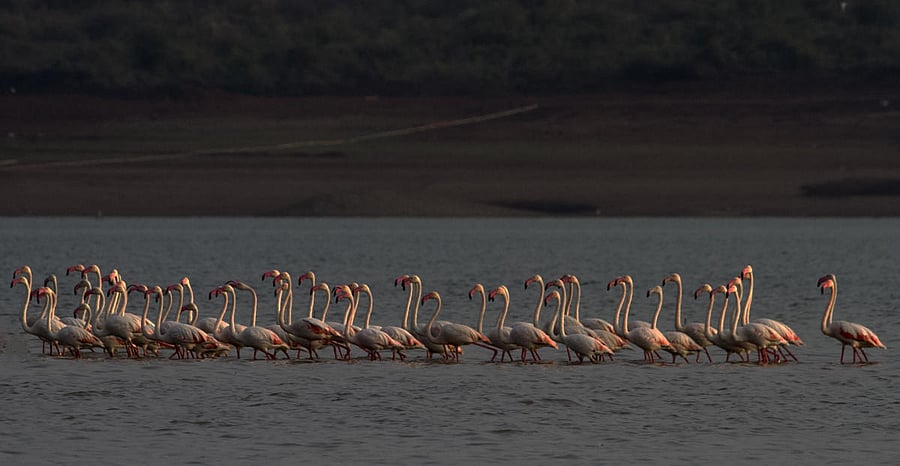Once upon a time, Bagalkot was known as ‘Bagadige’. As per mythology, Ravana ruled this area. In history, it has been recorded that the rulers of Vijayapura (then Bijapur) gave this area as an offering during their daughter’s wedding and so, it came to be known as Bagadikote. Later this Bagadikote became Bagalkot. After the Almatti dam was built, this land, which was the birthplace of Ranna, witnessed a lot of changes, both geographically and culturally.
Those who lost their houses to the Almatti backwaters were rehabilitated in a new area named Navanagar. The people shifted to new area with new hopes, aspirations and opportunities.
Among those who found a new lease of life in this land were birds. The lands that submerged in the Almatti backwaters created a field day for these winged visitors. Presence of birds, especially migratory, increased in this area in the last 10 years and gave rise to the name ‘paradise of birds’.
Chikkasangama, bordering Vijayapura district, Bilgi, Herkal, Kolhar, Almatti and Hipparagi areas attract maximum birds and the number has gone up considerably in this decade. Among the birds which camp here are black-headed ibis, flamingos and colourful storks. The stars among them are the flamingos which are more in number and attract tourists.
The lifestyle of these vibrant flocks of flamingos is quite interesting and just a glimpse of these huge flocks on the river banks is enough to fascinate anyone. In the initial days, ornithologists were trying to find out if these birds were cranes or ducks. Later, they identified them as a type of flamingos.
There are six sub-species of flamingos around the world. These birds generally live in areas with warmer temperatures with water availability and feed on diatoms, algae, mollusks and crustaceans. Known for their striking flight formations, they have bright red, long and slender legs, ‘S’ shaped coiled pink necks and milky white body with light orange-shaded feathers. They can even walk in the water for some time due to their special webbed feat and light-weight. The feathers of newly born flamingos which are white in colour tend to change colour over time and the colour depends upon the food they eat. Also, the beak of these birds is unique. They can separate the mud and sand from the food that they grab from the water.
While breeding, the male and female build the nest together. Like pigeons, a male flamingo also feeds the young ones.
As the environment and the surroundings in Bagalkot area are conducive for flamingos, the area has become a ‘fortress’ for flamingos.
Flamingos are generally found in large numbers in the Kutch region of Gujarat. But now, they are also coming to Bagalkot and this sudden increase in numbers has made many ornithologists curious.
Birdwatcher from Bilgi, Dawal Nadaf, said that many construction works have been going on in the places where the birds used to migrate earlier. Not finding that place suitable for breeding and rearing young ones, these birds found their alternative home in Bagalkot.
He said that in 2016, they spotted around 2,000 flamingos in Bilgi area alone. But in 2017, their numbers came down to 400. Heavy rain must have been the reason for such drop in number that year alone.
“Flamingos come to Bagalkot area around November and camp here till May. Birdwatchers from Bengaluru and Mysuru come here with total enthusiasm to see these interesting birds. With such tourist inflow, safeguarding the ‘house’ of these birds is our collective responsibility”, Nadaf said. There is also a proposal to announce this area as a migratory bird sanctuary.
